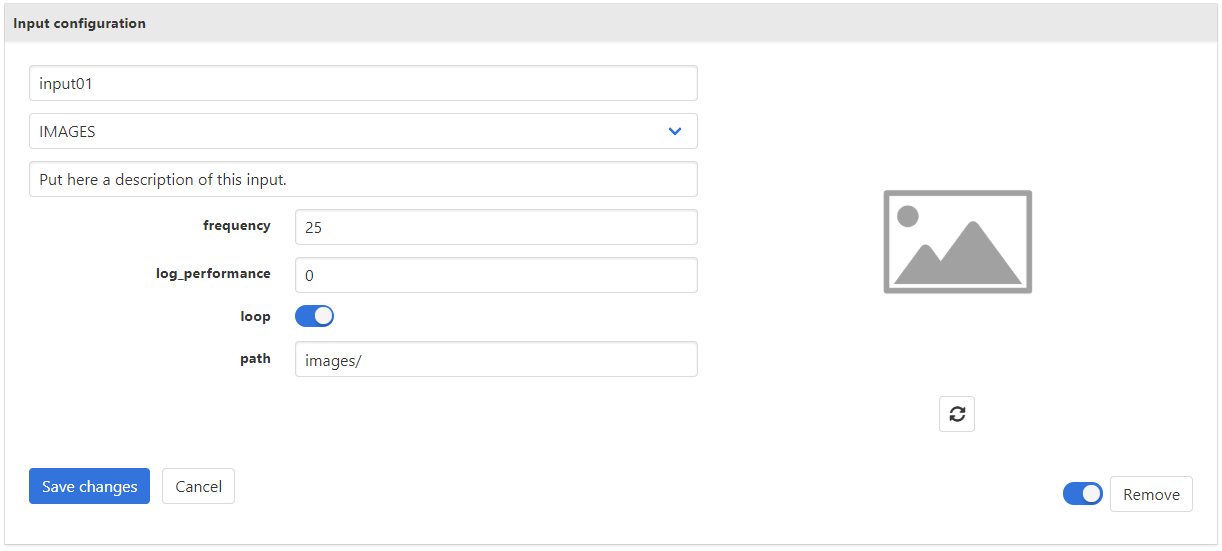The inputs are sources of visual information. BitRefine Heads platform allows working with various input types. This is the description of the platform's standard inputs.
IP cameras (ONVIF)

RTSP
The RTSP input type allows reading video from the RTP stream from IP-cameras. More about streaming protocol RTSP.

-
frame_buffer: How many frames should pipeline keep in its internal buffer. This parameter is important for smooth display ONLY. -
frequency: How often pipeline takes new frame from this source. (frames per second) -
model_frequency: How often the core neural network takes frames from this particular pipeline for deep recognition. Sometimes you don't need to do object recognition in every frame. You can skip some intermediate frames and let the tracking processor bridge the gaps. Reducing model frequency can save much compute power and allow to process much more cameras on the same hardware. Value is given in seconds. (25fps is 0.04 sec) -
url: This is the camera's RTSP URL. the common format isrtsp://login:password@ip-address:port/You can obtain RTSP URL from camera manufacturer or from ONVIF Device manager. -
use_rtsp_buffer: There's a buffer, provided by an RTSP device. The pipeline can take frames from the buffer or skip the buffer and read the most recent frames. Using the buffer is a preferred option if you read at 25fps, the same frame-rate as the camera streams. If you want to read at low fps (parameterfrequency), the RTSP buffer should be turned off to avoid high latency.
GenICam
This input type allows connecting machine vision cameras via Ethernet. More about technology GenICam
frame_buffer: same as in RTSP Inputfrequency: same as in RTSP Inputlog_performance: same as in RTSP Input-
model_frequency: same as in RTSP Input -
pixel_format: Machine vision cameras allow a number of pixel formats. You can configure this parameter from here or from special camera configuration application, provided by the camera manufacturer. -
url: This is IP-address of the GenICam device. Important to remember that GenICam relies on UDP broadcast, thus needs to be in the same subnet with the 'Head'.
Video
This input allows reading standard video files from a local or a shared folder.

frame_buffer: same as in RTSP Inputfrequency: same as in RTSP Inputlog_performance: same as in RTSP Input-
model_frequency: same as in RTSP Input -
loop: After video reaches the end it will start again from the beginning. This is useful when configuring the pipeline using a test footage. If turned off, the pipeline will be stopped automatically upon reaching the end of the video file. A notification will be sent to the user. -
video_path: This is the path to a video file. The Head's source video folder isheads_shared/src_video/.
Images
This input type allows processing batches of individual images.

frequency: same as in RTSP Inputlog_performance: same as in RTSP Inputloop: After reaching the end of the batch pipeline will start again from the beginning.path: This is the path to image files. The Head's source images folder isheads_shared/src_images/.
Dev
This input allows reading video stream from local devices connected to the Head machine, such as USB- or built-in cameras.

-
device_id: This is an ID of local camera. By default, starts from0. -
frame_buffer: same as in RTSP Input frequency: same as in RTSP Inputlog_performance: same as in RTSP Inputloop: After reaching the end of the batch pipeline will start again from the beginning.